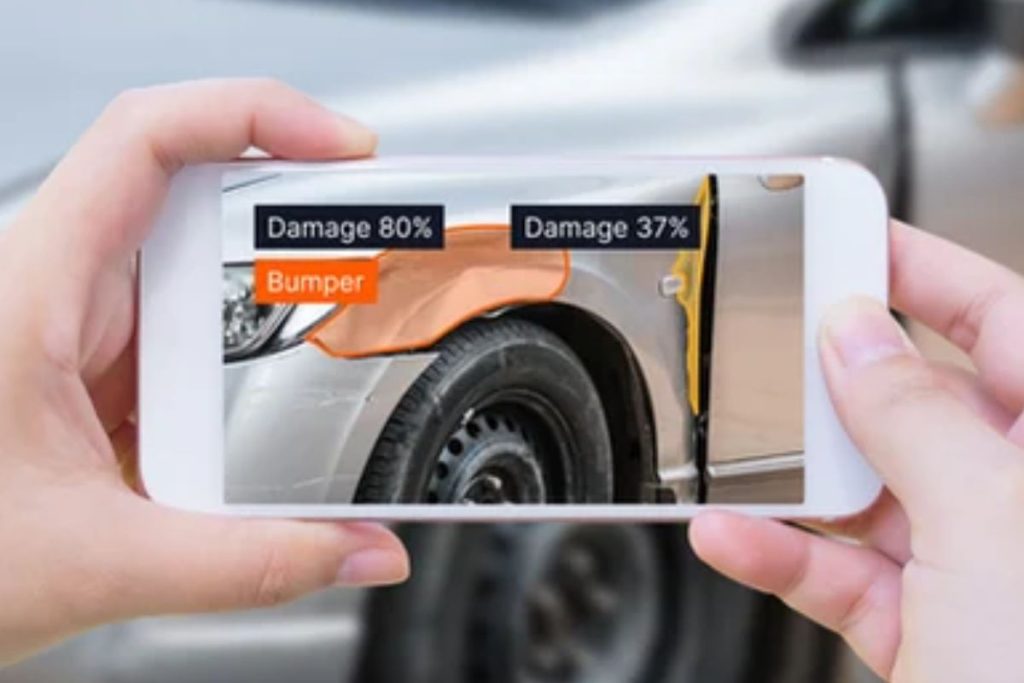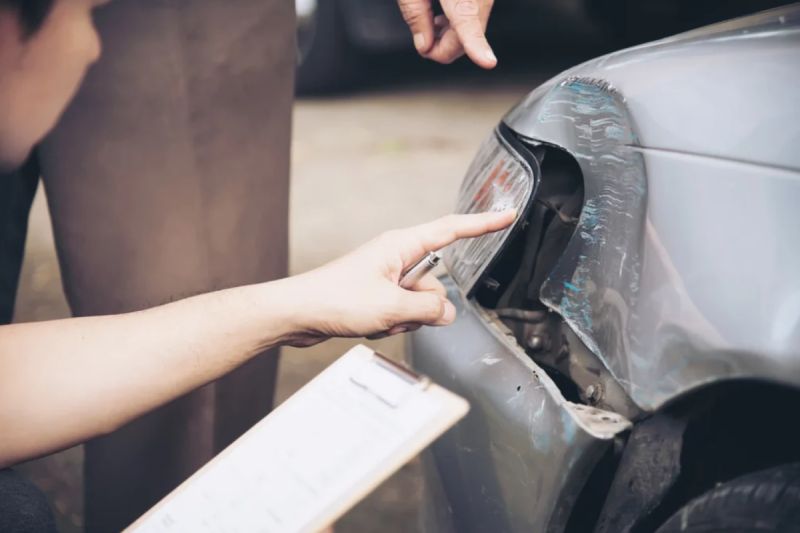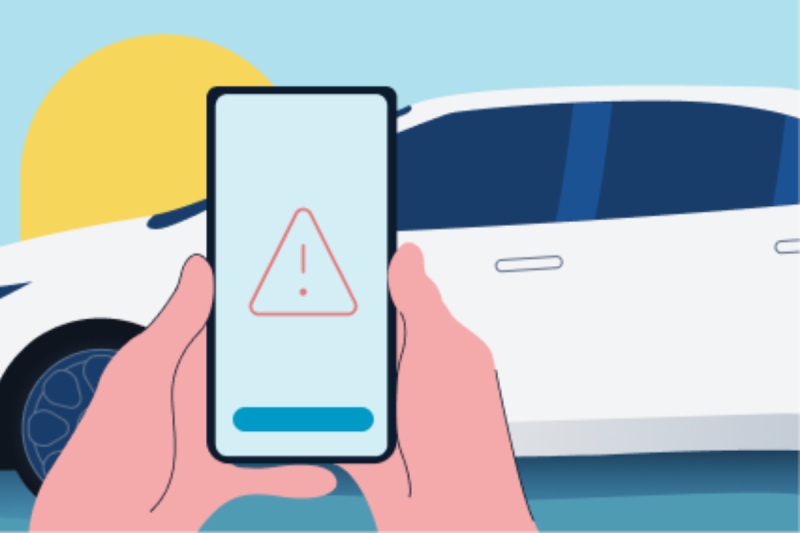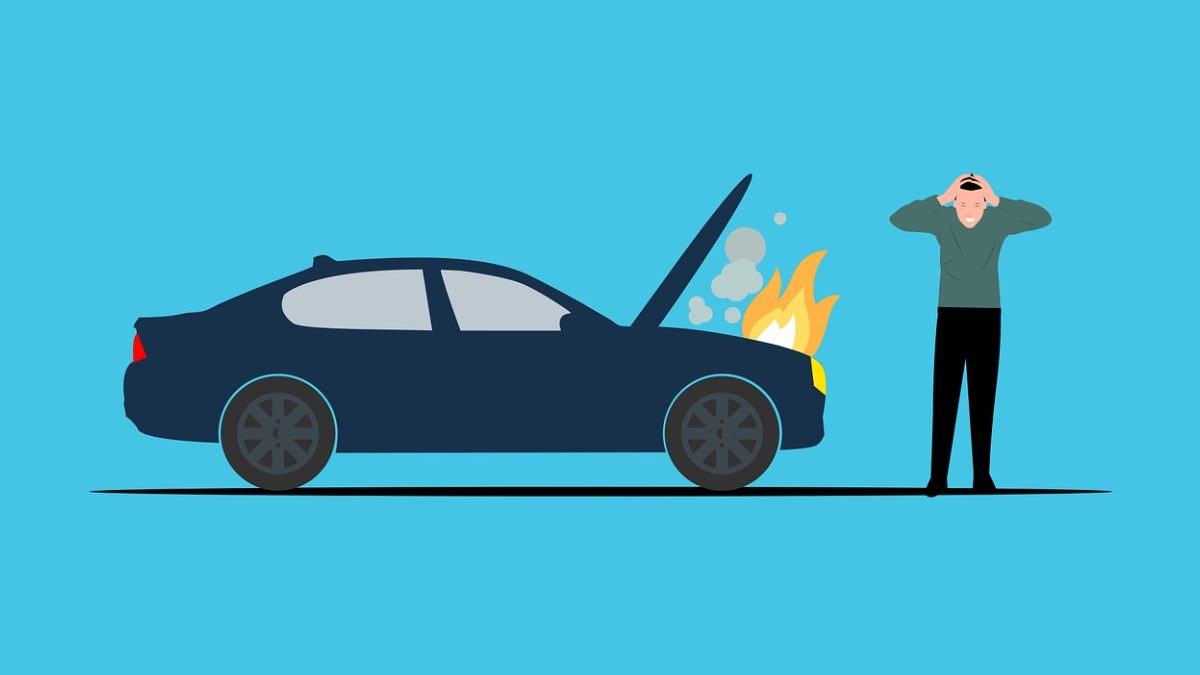When a vehicle is damaged in an accident, what we see on the exterior only tells part of the story. Beneath dented panels and shattered lights often lie critical internal components that may have sustained serious damage—components whose failure could lead to safety hazards, unexpected breakdowns, or diminished vehicle performance.

Traditionally, the detection of internal vehicle damage requires an expert inspection which is a time-consuming, costly process that also includes human subjectivity and error potential. Advanced artificial intelligence solutions are now changing this approach, offering more efficient and reliable methods for solving damage that extends beyond visible surfaces.
AI is incredibly efficient at identifying external damage like scratches, dents, and paint issues, but faces challenges during the analysis of internal damage. Let’s explore how cutting-edge AI technologies adapted by companies like Inspektlabs are addressing these challenges and transforming vehicle inspection practices.
Table of Contents
ToggleThe Internal Damage Detection Challenge
Internal vehicle damage assessment faces several significant obstacles not present in external inspections:

Limited Visual Access
Unlike external surfaces that can be easily photographed, many internal components remain hidden from view without partial or complete disassembly. Critical systems such as:
- Engine and transmission components
- Structural frame elements
- Suspension and steering mechanisms
- Electrical systems and control modules
- Safety equipment like airbag deployment systems
All require special access for direct visual inspection, making traditional AI visual analysis challenging.
Complex Damage Patterns
Internal damage often manifests in subtle ways that even experienced human inspectors might miss:
- Hairline fractures in structural components
- Slight misalignments in precision assemblies
- Compromised electrical connections
- Thermal damage to sensitive components
- Microscopic metal fatigue invisible to the naked eye
High Consequence of Missed Detection
Perhaps most importantly, failing to identify internal damage carries significant risks:
- Compromised safety systems that may fail in subsequent accidents
- Progressive mechanical deterioration leading to catastrophic failure
- Inaccurate repair cost estimation affecting insurance claims
- Reduced vehicle longevity and reliability
These challenges have historically limited the application of AI in internal damage assessment. However, innovative approaches are now emerging that combine visual AI with predictive modeling to overcome these limitations.
Innovative Approaches to Internal Damage Detection
Two primary methodologies are effectively addressing the internal damage detection challenge:

1. Dismantled Parts Analysis
The first approach involves AI analysis of a temporarily dismantled vehicle which allows a visual inspection of normally hidden parts.
How It Works
The process follows a specific workflow:
- Strategic dismantling of accessible components (wheels, bumpers, panels)
- Photographic or video documentation of exposed internal parts
- AI analysis of these images using specialized damage recognition algorithms
- Automated assessment of component condition including severity scoring
- Repair/replacement recommendations based on established standards
This approach works particularly well for semi-exposed systems like:
- Brake components (discs, pads, calipers) exposed by wheel removal
- Cooling system components visible with the removal of front bumper assemblies
- Suspension components accessible with minimal disassembly
Advantages and Limitations
AI-powered technologies provide with highly accurate results when properly implemented, however it comes with practical limitations:
- Requires some level of mechanical disassembly
- Not feasible for complete vehicle inspections due to time constraints
- Impractical for customer self-service applications
- May require professional assistance to ensure proper documentation
While this approach generates reliable results, its application remains limited to specific use cases where component accessibility makes it practical.
2. Predictive Analysis from External Damage Patterns
The second and more innovative approach uses sophisticated AI models to predict internal damage based on visible external damage patterns, without requiring disassembly.
How Prediction Models Work
These systems employ several advanced techniques:
- Correlation Analysis: By analyzing a lot of cases where both external and internal damage were documented, AI systems identify relationships between damage patterns.
- Physics-Based Modeling: Understanding how force propagates through a vehicle’s structure allows AI to model likely internal damage paths based on visible impact points, directions, and severities.
- Vehicle-Specific Knowledge: Different vehicle designs distribute impact forces differently. Advanced AI systems include detailed vehicle data which helps to predict solutions that are tailored to specific makes and models.
Two primary implementation approaches exist:
Generic Car Model Approach
This method applies broad automotive engineering principles to make predictions:
- AI identifies visible damaged external parts
- The system categorizes damage by type, location, and severity
- Algorithms apply generalized structural knowledge to predict affected internal components
- Predictive models generate probability assessments for internal damage
- The system produces recommendations based on confidence thresholds
This approach works well for conventional vehicle designs with predictable structural characteristics.
3D Structural Model Approach
For vehicles with unique structural designs—particularly electric vehicles with non-traditional component layouts—a more sophisticated approach is required:
- The system references detailed 3D structural models of the specific vehicle
- AI maps external damage patterns onto these models
- Simulation algorithms model force transmission through the structure
- The system identifies likely internal damage locations based on stress concentrations
- Predictions incorporate component vulnerability data specific to that vehicle
This approach is particularly valuable for:
- Electric vehicles with battery packs and unique drivetrain layouts
- Vehicles with composite or non-traditional structural materials
- High-end vehicles with complex active safety systems
- Commercial vehicles with specialized equipment
Real-World Applications and Benefits
The implementation of AI-powered car damage detection delivers several significant benefits across the automotive ecosystem:
For Insurance Companies
- More accurate initial damage assessments reduce claim adjustment needs
- Faster claim processing improves customer satisfaction
- Better fraud detection by identifying inconsistencies between reported accidents and damage patterns
- More precise premium calculations based on comprehensive repair data
For Repair Facilities
- Comprehensive damage identification before beginning repairs
- More accurate cost estimations and parts ordering
- Improved repair planning and resource allocation
- Reduced liability risk from missed damage
For Vehicle Owners
- Faster claim resolution and vehicle restoration
- Increased confidence in repair completeness
- Improved safety through comprehensive damage identification
- More transparent repair processes
For Fleet Managers
- Better maintenance planning based on early detection of developing issues
- More accurate residual value assessments
- Optimized vehicle lifecycle management
- Enhanced safety compliance
Implementation Considerations
Organizations looking to implement AI-based internal car damage detection should consider several key factors:
Technology Selection
The appropriate approach depends on specific use cases:
- Dismantled parts analysis works best in professional repair environments
- Predictive modeling is better suited for initial assessments and triage
- Combined approaches provide the most comprehensive results
Integration Requirements
Effective implementation typically requires:
- Integration with existing claims management or repair systems
- Appropriate image capture protocols and quality standards
- Staff training on system capabilities and limitations
- Clear processes for handling edge cases
Continuous Improvement Planning
AI systems improve with additional data and feedback:
- Establishing validation processes for AI predictions
- Collecting actual repair data to refine predictive models
- Regularly updating vehicle structural databases
- Incorporating new damage patterns as vehicle designs evolve
The Future of Internal Damage Detection

As AI technology continues advancing, several promising developments are emerging:
- Multi-sensor fusion combining visual, thermal, and acoustic data for enhanced detection
- Onboard diagnostic integration incorporating vehicle sensor data into damage assessments
- Augmented reality guidance helping technicians identify predicted damage locations
- Automated disassembly documentation tools streamlining the inspection process
Conclusion: Transforming Vehicle Safety and Repair Accuracy
The ability to efficiently detect internal vehicle damage shows a critical safety and economic approach. Unidentified internal damage can lead to serious accidents, premature component failure, and even incorrect insurance valuations—all with significant consequences.
AI-powered detection systems are transforming this challenge by making damage assessment more accessible, consistent, and accurate. Including and analyzing parts that also require sophisticated predictive modeling, these technologies are vehicle safety while streamlining the repair and claims processes.
Shashi Teja
Related posts
Hot Topics
Small Home Improvements That Make a Big Difference
Home upgrades don’t always have to result in you doing a major project; in fact, some of the most rewarding…
How Eastern States Are Embracing the Future of Smart Traffic Systems
The eastern cities of India are undergoing a major transformation in their urban traffic management systems. Eastern states like West…



